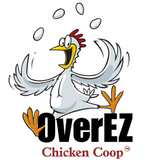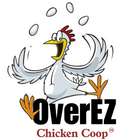What is a Chicken Comb?
Chicken combs are the red growths on top of a chicken's head. In rare cases, chicken combs can be black or a shade of purple. They come in a variety of shapes and sizes, but there are nine recognized types: walnut, strawberry, V, rose, single, buttercup, carnation, cushion, and pea. The most common type is the classic single comb, which usually is the type of comb people think about when they think of a chicken comb.

Why do Chickens Have Combs?
Chicken combs are essential for a variety of reasons. For chicken keepers, they are necessary for evaluating a chicken’s health and for telling chickens apart. A healthy chicken will have a vibrantly colored comb; depending on the type, it will stand up and look strong.
One of the first telltale signs that something is wrong with your chickens is an unhealthy-looking comb. Younger chickens will sometimes have pinker combs because they have yet to develop fully. In general, roosters develop their combs before hens do, and they are more pronounced and large.
Not only are combs useful for chicken keepers, but they are very telling in the chicken world because they indicate the status of a chicken.
Combs also help chickens regulate their body temperatures. In warmer temperatures, blood in a chicken’s body pumps faster, which causes blood to circulate to the chicken’s comb more often, which helps reduce them cool down and reduce body heat. Bigger chicken combs are beneficial for warmer environments because more heat can be released.
Chicken Comb Types
Buttercup
Buttercup combs are unique and look like two single combs are added together. A male chicken’s buttercup comb is large, but the comb is much smaller on female chickens.
Sicilian Buttercups are the only chicken breed in the world with this comb.
Because combs help regulate temperature, this comb is great for warm weather. The shape and size of the comb help chickens cool down quickly.
Carnation
Carnation combs, also known as King’s combs, are rare. There are only two breeds in the world with this comb, the Empordanesa, and Penedesenca.
It looks like a single comb but has extra spikes and can look like a crown. Carnation combs stand upright on male chickens but droop to the side on female chickens.
Cushion
Cushion combs are small, close to the chicken’s head, and look like a cushion sitting on top of the head. Most combs are bumpy and textured, but the cushion comb is smooth. The Chantecler breed has this comb type.
Because cushion combs are small, it is ideal for chickens in colder climates. It prevents frostbite and will preserve a chicken’s body heat.
Pea
Pea combs are small to medium-sized and sit low on the head. This comb has three ridges, with the middle ridges slightly taller than the others. Brahmas, Ameraucanas, and Sumatras have this type of comb.
Like the cushion comb, pea combs are excellent for cold climates and prevent frostbite.
Rose
Rose combs are flat but plump and extend from the beak to the back of the chicken’s head, ending in a pointed spike. The breeds with this comb type are Hamburgs, Red Caps, Sebrights, and Wyandottes.
Like cushion combs and pea combs, they are well suited for cold climates and are not likely to get frostbitten due to their smaller size.

Single
Single combs are the most common type of comb. They are thin with around 5 to 6 serrations. The serrated points are taller in the middle and shorter at the front and back.
Many chicken breeds have this comb, including Andalusians, Australorps, Barred Rocks, Cochins, Delaware, Leghorns, Minorcas, Orpingtons, and more.

Ayam Cemani chickens also have this comb type; however, their combs are black.

Strawberry
Strawberry combs are low to a chicken’s head like a cushion comb but are thicker and bumpier. Malay chicken breeds have this comb type.
V (Devil's Horn)
The V comb, also known as the Devil’s Horn, looks like the letter V. It is a horn-like comb that splits off to the right and left of a chicken’s head. V combs are rare and only seen in a few chicken breeds, including, Crèvecœurs, La Flèches, and Sultans.

Walnut
Walnut combs are round with lumps and grooves. Because of this texture, it looks like a walnut is sitting on top of the chicken’s head. Chicken breeds with this comb are Silkies and Yokohamas. Generally, walnut combs are red, but Silkies will have purple-colored combs.

Common Chicken Comb Problems
Pale Chicken Combs
Healthy chicken combs have vibrant colors and are firm. Occasionally, chicken combs can be pale pink. If you notice that your chicken’s comb looks abnormal, it could indicate something is wrong. There are a few reasons why a chicken’s comb can be pale:
- Overheating - If your chickens are overheating, ensure they have shady areas and fresh, clean water. Check out our tips for keeping chickens cool in the summer.
- Molting - This is a normal process where chickens lose and re-grow their feathers. Once this process is complete, their combs should return to their usual color.
- Anemia - Fleas, lice, and mites are common causes of anemia in chickens. If this is the case, you should provide treatment and clean the chicken coop. Once the pests are gone, the comb color should return to its normal color.
- Internal worms - Combs that are pale pink can mean that a chicken has internal worms. If you suspect this is the case, check for watery or abnormal droppings, worms in eggs, reduced egg production, and more. Your chickens should be treated for worms immediately.
Black Spots on Combs
If your chicken’s comb has black spots, this is a sign of frostbite. Frostbite occurs when extremely cold, windy, and damp weather conditions cause blood flow to redirect to the vital organs to keep them warm. As a result, the extremities receive less blood flow, and the fluid beneath the skin becomes more vulnerable to freeze. This results in cell damage and an eventual darkening of the affected area as tissue death occurs. Luckily, frostbite develops in stages, and knowing what to look for can help you better protect your flock.
If you notice these spots on your chicken’s comb, don’t remove those areas even if the chicken is back to complete health. The dead tissue will help protect the healthy tissue. There are a few ways you can prevent frostbite, including:
- Choosing cold hardy breeds
- Insulating the chicken coop
- Ventilating the chicken coop to prevent moisture buildup.
- Providing additional heat
- Keep bedding dry and clean
Avian Influenza
Generally, this is nonfatal and will pass. Some strains can be deadly if they are not treated right away. Symptoms include respiratory issues, blue combs, swelling of different body parts, reduced egg production, abnormal eggs, and more.
Pecking
While pecking is natural in the chicken world, there are times when it can become too much and can cause damage to a chicken’s comb. If you notice chickens that are bullying other members of the flock, you should separate them to prevent further injury.
How to Care for Chicken Combs
The best way to care for chicken combs is by keeping your flock healthy. Even though they are a small part of a chicken’s body, they are essential in the overall health of a chicken.
Do you have any extra tips for taking care of chicken combs? Let us know in the comments!


